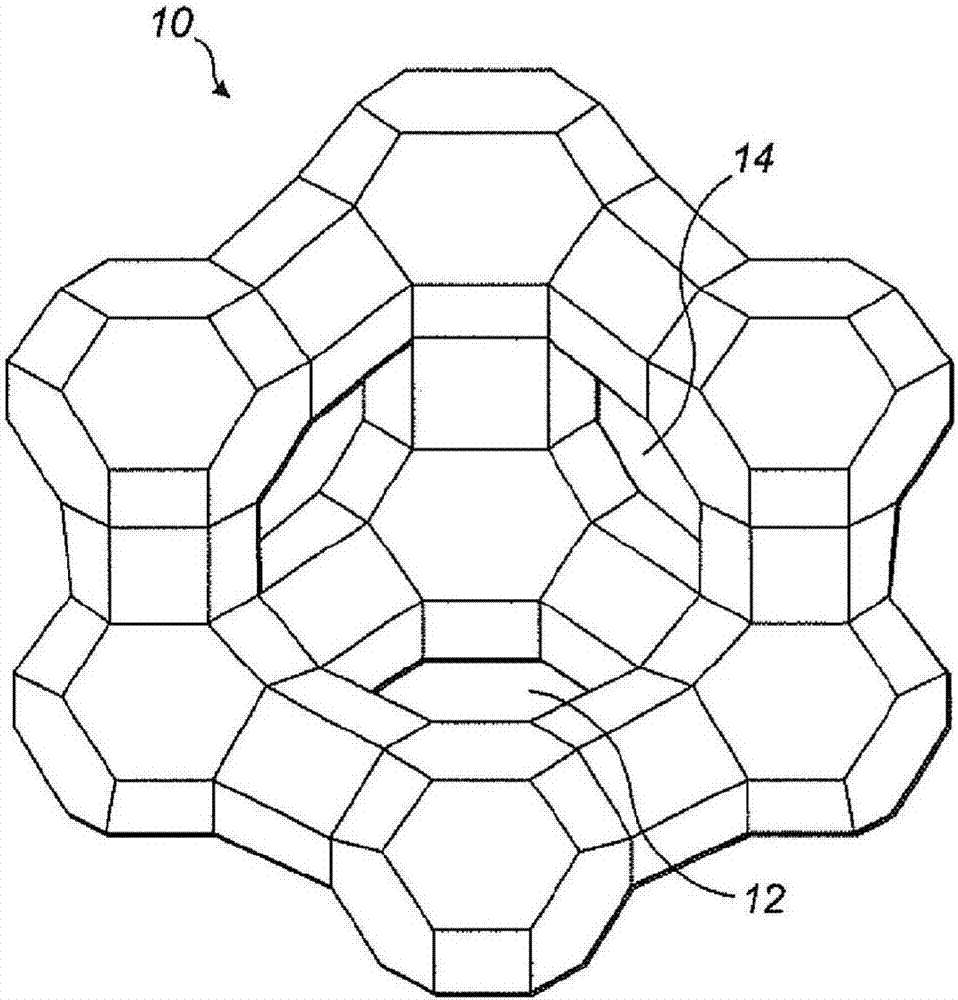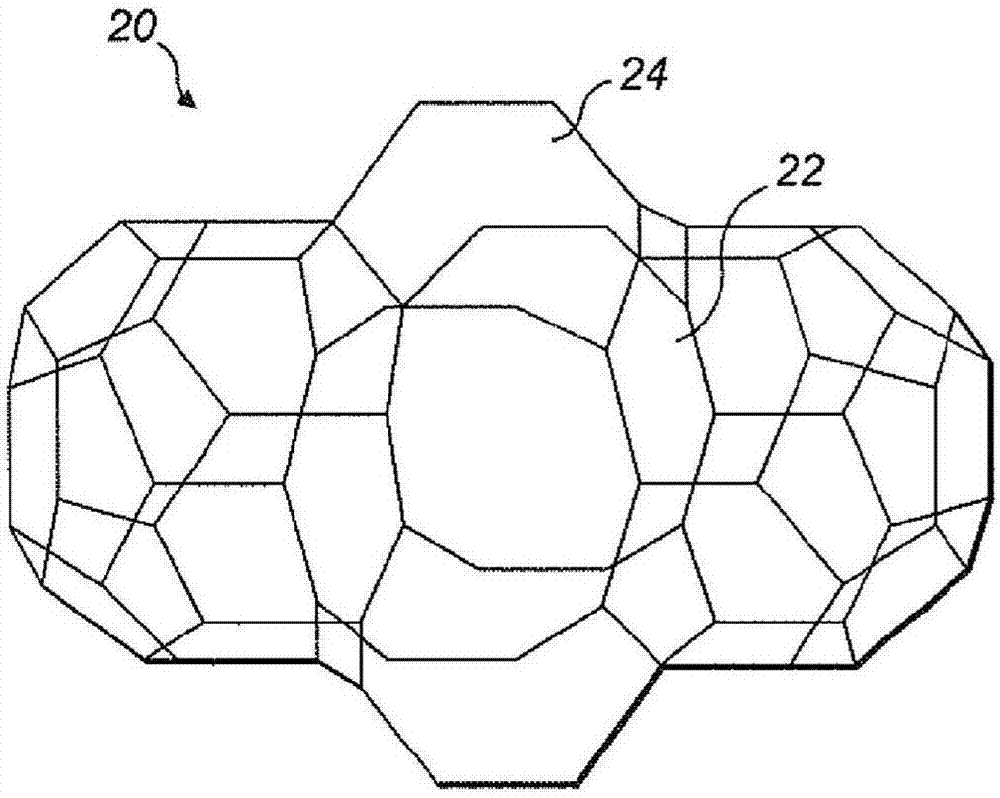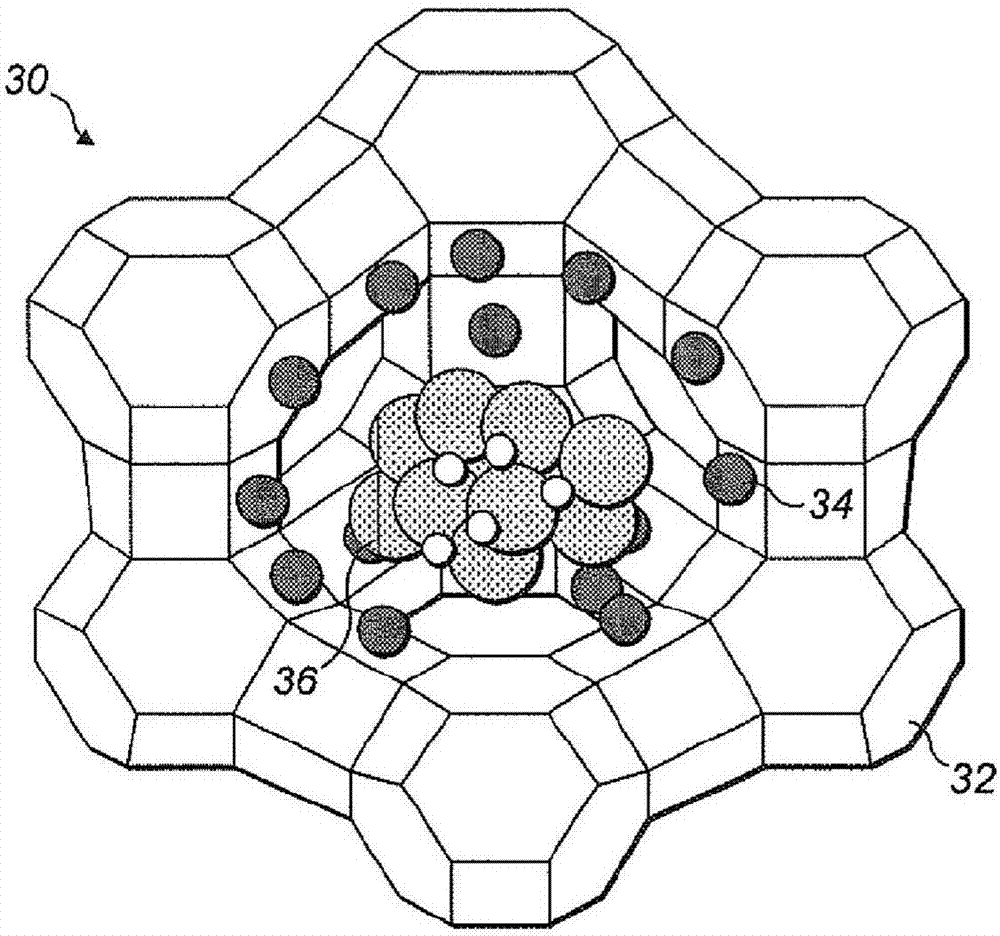Methods of preparation and forming supported active metal catalysts and precursors
A technology of supported catalysts and porous catalysts, which is used in the field of catalyst preparation, synthesis and/or conversion of hydrocarbons, and carbon oxide hydrogenation processes, and can solve problems such as reducing the effective surface area of the catalyst and reducing the activity of the catalyst
- Summary
- Abstract
- Description
- Claims
- Application Information
AI Technical Summary
Problems solved by technology
Method used
Image
Examples
Embodiment 1
[0183] Example 1 - Catalyst A
[0184] The following steps were performed to prepare Catalyst A (Fe / Ce / Cu / KY).
[0185] Preparation of Na + Y-zeolite in cation exchange form. However, implementation with K + The ion exchange performed, the reason is that for Fe-based HTFT catalysts, K + is better than Na + Good cocatalyst.
[0186] Ion exchange of NaY was performed by adding 12 g of NaY to 600 ml of 0.5 M K in double deionized water 2 CO 3 carried out in solution. K 2 CO 3 The amount in solution expresses K + 6-fold excess relative to the amount of cation exchange sites of the zeolite. The resulting suspension was stirred and heated at 80°C with reflux cooling for a minimum of 4 hours. The resulting ion-exchanged zeolite was then filtered and washed with double deionized water.
[0187] This process was repeated three times in order to obtain complete ion exchange and to provide excess cations beyond the ion exchange capacity of the framework and to dry before u...
Embodiment 2
[0209] Example 2 - Catalyst E
[0210] As described above, the catalysts of the present invention are also suitable components for the preparation of bifunctional catalysts. In this example, Catalyst E was prepared by combining 5 g of Catalyst A with 5 g of ZSM-5 zeolite extrudate (80% H-ZSM-5 zeolite, 20% alumina binder) that The zeolite extrudate was placed over Catalyst A in the catalyst basket of the STIRR reactor. This arrangement is equivalent to a bifunctional catalyst containing Catalyst A and H-ZSM-5 zeolite.
[0211] Catalyst E was tested at different weight hourly space velocities in the hydrogenation of carbon monoxide. The test results are shown in Figure 8 and Table C summarize the test results at the highest weight hourly space velocity used.
[0212] exist Figure 8 , Catalyst E is at steady state at 7800h -1 exhibited 74.3% carbon monoxide conversion at a GHSV of 43.4% in the product and a C5+ selectivity of 35.9%. Methane selectivity was 19.3%.
[...
PUM
| Property | Measurement | Unit |
|---|---|---|
| diameter | aaaaa | aaaaa |
| diameter | aaaaa | aaaaa |
| conversion efficiency | aaaaa | aaaaa |
Abstract
Description
Claims
Application Information
 Login to View More
Login to View More - R&D
- Intellectual Property
- Life Sciences
- Materials
- Tech Scout
- Unparalleled Data Quality
- Higher Quality Content
- 60% Fewer Hallucinations
Browse by: Latest US Patents, China's latest patents, Technical Efficacy Thesaurus, Application Domain, Technology Topic, Popular Technical Reports.
© 2025 PatSnap. All rights reserved.Legal|Privacy policy|Modern Slavery Act Transparency Statement|Sitemap|About US| Contact US: help@patsnap.com



